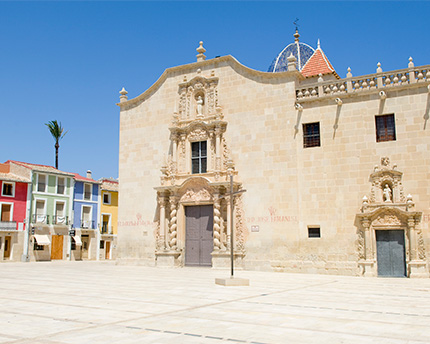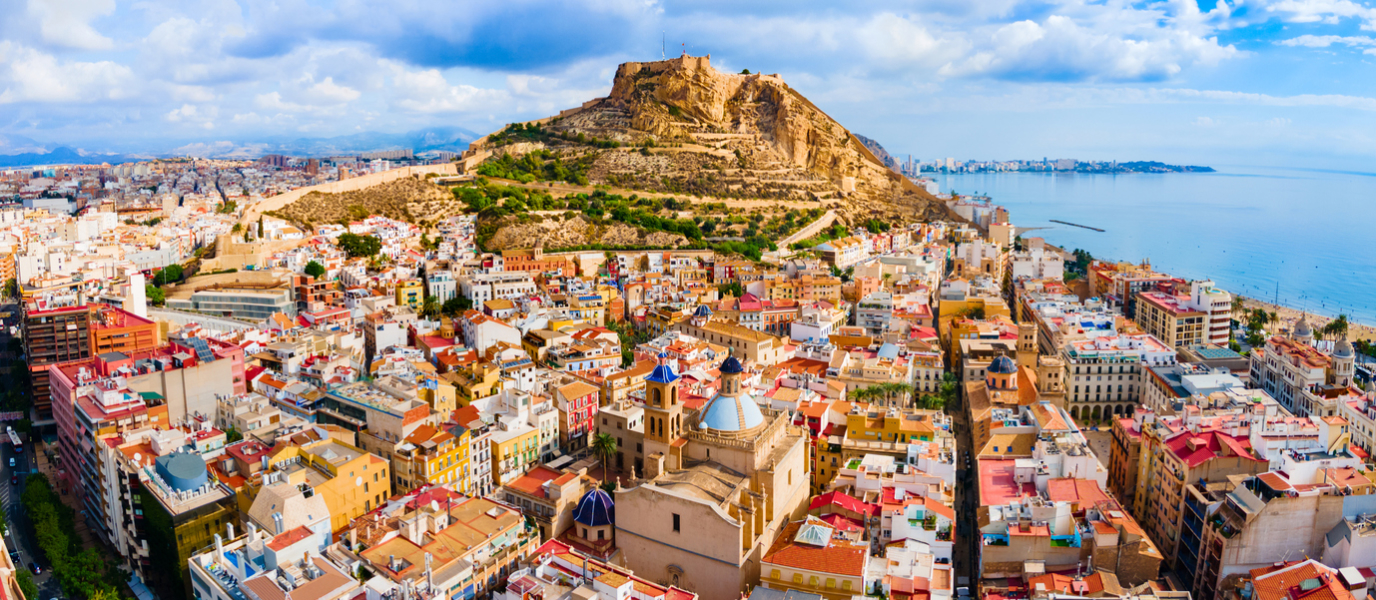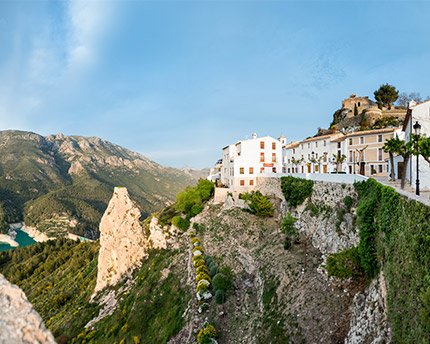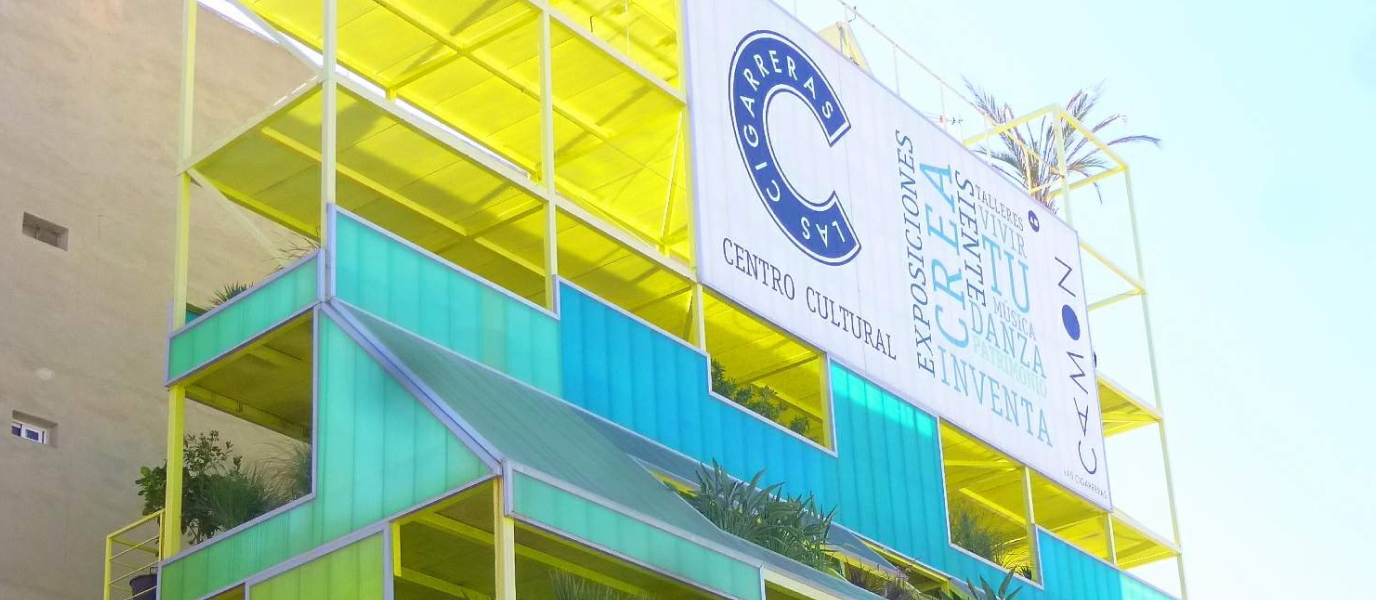The Holy Face of Jesus, the supposed cloth that St Veronica used to dry the face of Christ on the way to the Calvary, has been at the heart of one of Alicante’s biggest religious festivals since 1489. It is kept in a chapel with a hexagonal plan built in the seventeenth century known as the Niche of the Holy Face: a small space, housed within the monastery of the Order of St. Clare, in which each year thousands of pilgrims congregate in order to contemplate the relic that has created rivers of ink.
The unknown origins of the Holy Face
The origins of the cloth have still not been completely established, although it is thought that it may have come from Jerusalem via Cyprus, Constantinople and Rome. By all accounts, the veil came to Alicante from the Vatican and priest Pedro de Mena in the late sixteenth century, although its trajectory is hard to trace throughout the intricacies of history. It is thought that, due to the persecution suffered by Christians in Jerusalem, the relic came into possession of the King of Cyprus before being transferred to the Hagia Sophia in Constantinople in the year 640. It remained there until 1453, when, upon its fall to the Ottoman Turks, the sons of Emperor Constantine XI offered Pope Nicholas V several relics, among which was the Holy Face of Alicante.
Santa Faz Monastery in Alicante and the Miracle of the Tear
Knowledge of the supernatural events that in Alicante are attributed to the Holy Face of Jesus have been passed down from generation to generation. It is said that on 17 March, 1489, at the height of a terrible drought, a procession from San Juan to Alicante took place in order to beg God for much-needed water. As the story goes, when the procession came to the Lloixa ravine – where Alicante’s Santa Faz Monastery currently stands – the priest holding the cloth felt a great weight on his arms and those in attendance witnessed a tear appear in the right eye of the Holy Face, which ran all the way down its cheek. A nobleman from Alicante touched the tear and was so overwhelmed that he asked the king to add the words ‘de la Verónica’ (from St Veronica) to his noble title.
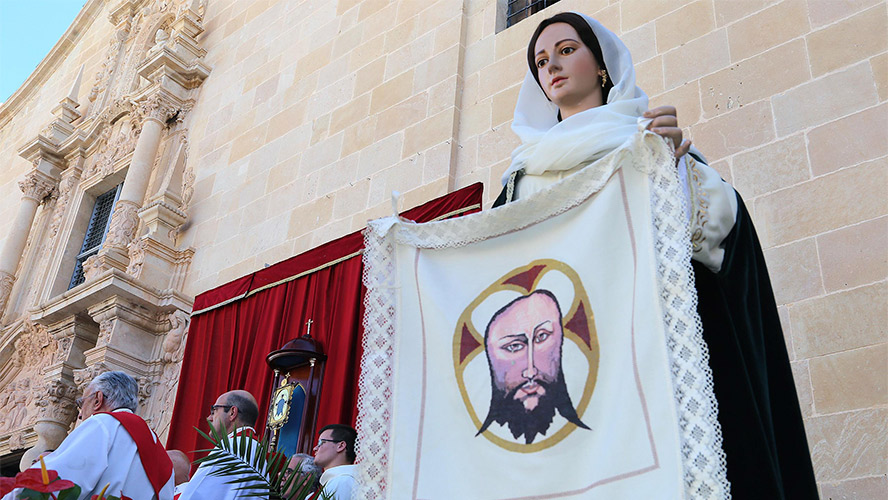
The procession came to a halt right there, but it was resumed one week later on 25 March. That day, when the penitents were approaching their destination – the hermitage of Nuestra Señora de los Ángeles – the priest holding the cloth was overwhelmed by a state of ecstasy and two more faces of Jesus appeared in the sky. At that moment, it is said that the skies opened and a heavy downpour began to fall.
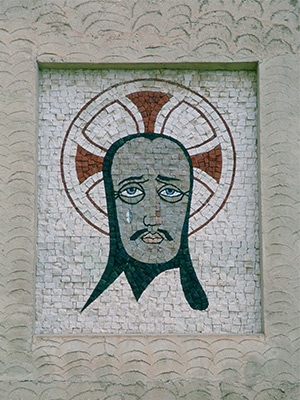
The Santa Faz Pilgrimage
Each year the Santa Faz Pilgrimage is celebrated to remember these unique events. Starting from the Co-cathedral of San Nicolás in Alicante the procession moves in the direction of the sanctuary in which the sacred cloth is housed. In total, close to 300,000 people travel a distance of eight kilometres each year on the second Thursday after Easter Sunday. It is the second most important religious pilgrimage in Spain after El Rocio.
The Miracle of the Tear, as it is also known, deeply affected locals and visitors alike, to the extent that one year later, in 1490, a temple was built to preserve the cloth. Pope Innocent VIII granted indulgences and King Ferdinand II of Aragon gave Alicante city status. Later on, in 1496, King Ferdinand approved the confraternity of St Veronica and in 1516 the present-day Santa Faz Monastery was founded.
Around the monastery a district – also known as Santa Faz – gradually began to form, most of which is part of Alicante city, with one area falling under the municipal area of San Juan.
The pledge of Juan Sebastián Elcano
It was on 30 January, 1525, when Pope Clement VII gave his consent to the office and mass of Santa Faz Monastery and approved the miracles that had occurred. Incidentally, in 1526, from the Pacific Ocean, Juan Sebastián Elcano, a Spanish explorer who completed the first circumnavigation of the globe, made his will asking for a pledge of his linked to the monastery in Alicante to be enacted should he not be able to return to do it himself. Such is the devotion of Alicante’s people for the Holy Face that, since 1636, it has been kept under lock and key with no less than four different keys, two of which are held by civil authorities while the others are kept within the monastery.
For a long time, the cloth was displayed on a board in view of everyone in San Juan Church. However, as many nobles wanted a piece of the cloth, touching it was prohibited and it was placed in a silver ring behind iron bars. In 1829 the cloth was moved to the present-day silver-gilt reliquary, where, through a glass pane, the painting with the Byzantine image of the Holy Face can still be seen.
Protection from kings and popes
In actual fact, successive kings of Spain have gone to great lengths to grant it protection, drafting regulations for improved safeguarding, such as those issued by Charles II. Even Benedict XVI granted new indulgences as well as establishing the Jubilee Year of the Holy Face.
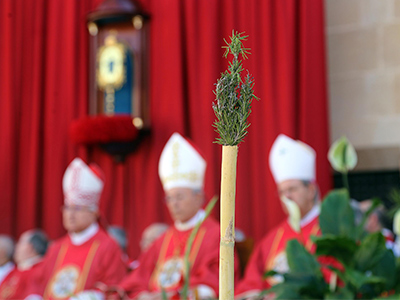
The relic has undergone different expert examinations and laboratory tests, the first of which was made at the request of the Holy See in 1690. The second took place in 1732, and the last one, in 1889, on the occasion of the fourth centenary of the miracles.
Viravens, a chronicler from the city of Alicante at the time, said that the test confirmed that it consisted of ‘a thin linen-like fabric measuring approximately 60 square centimetres, with shadows and blood-like spots, with facial features and artificial paint on the eyes, nose and mouth’.
Niche of the Holy Face
After more than 500 years, the Holy Face of Jesus cloth still attracts a great number of devotees. Between 1677 and 1680 the Niche of the Holy Face was built inside the monastery for the relic. On one of its eight walls is an altar together with the niche that safeguards the venerated image, while the other walls boast paintings by a renowned Valencian artist who went by the name of Conchillos, who painted the Miracle of the Tear and the apparition of the three faces of Jesus.




































































